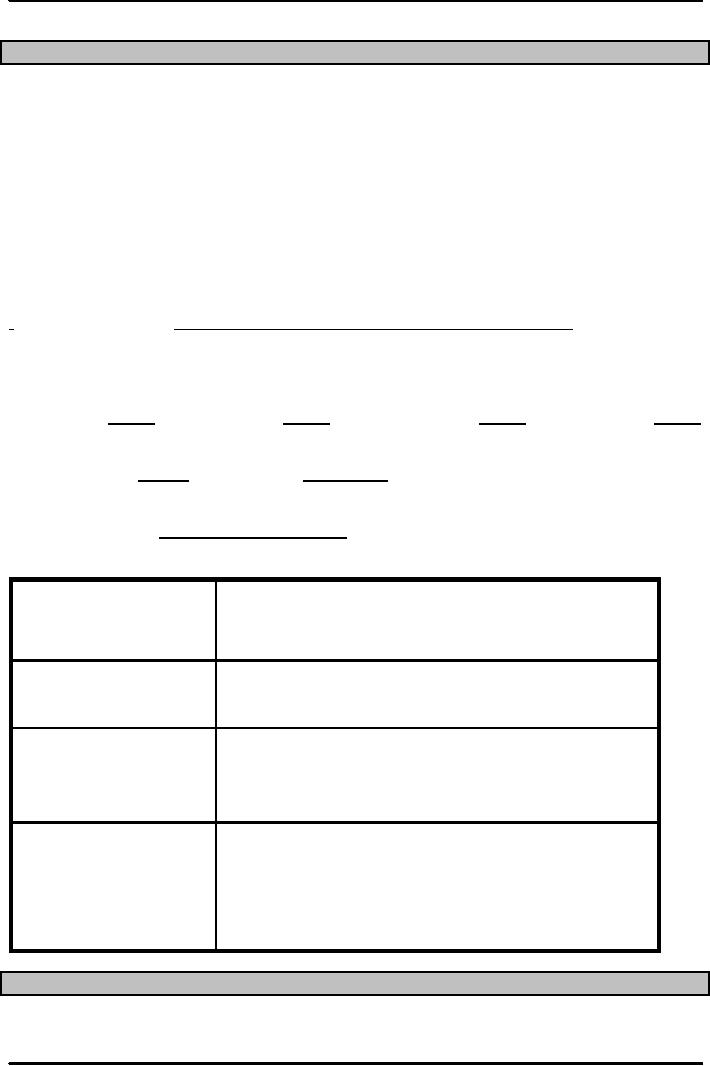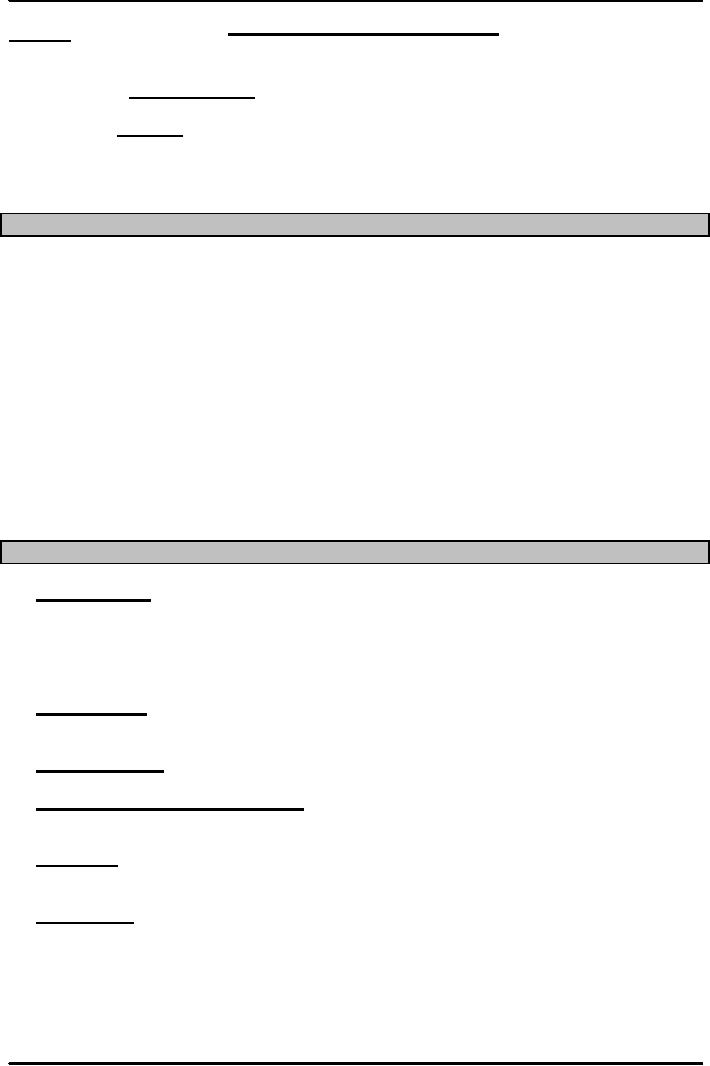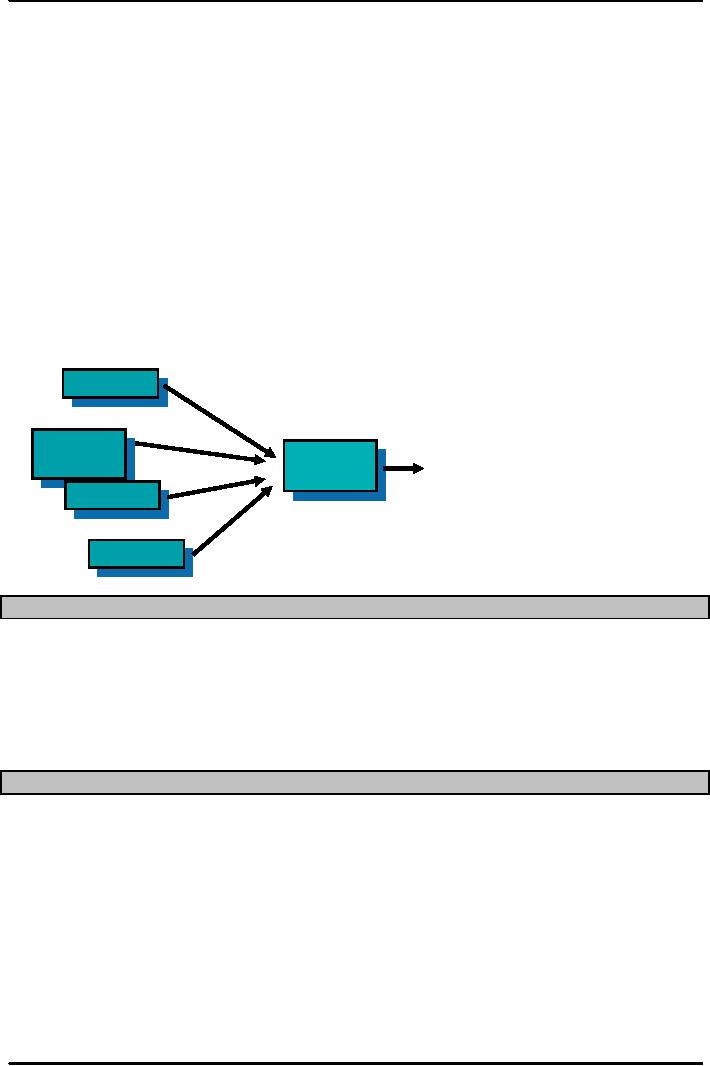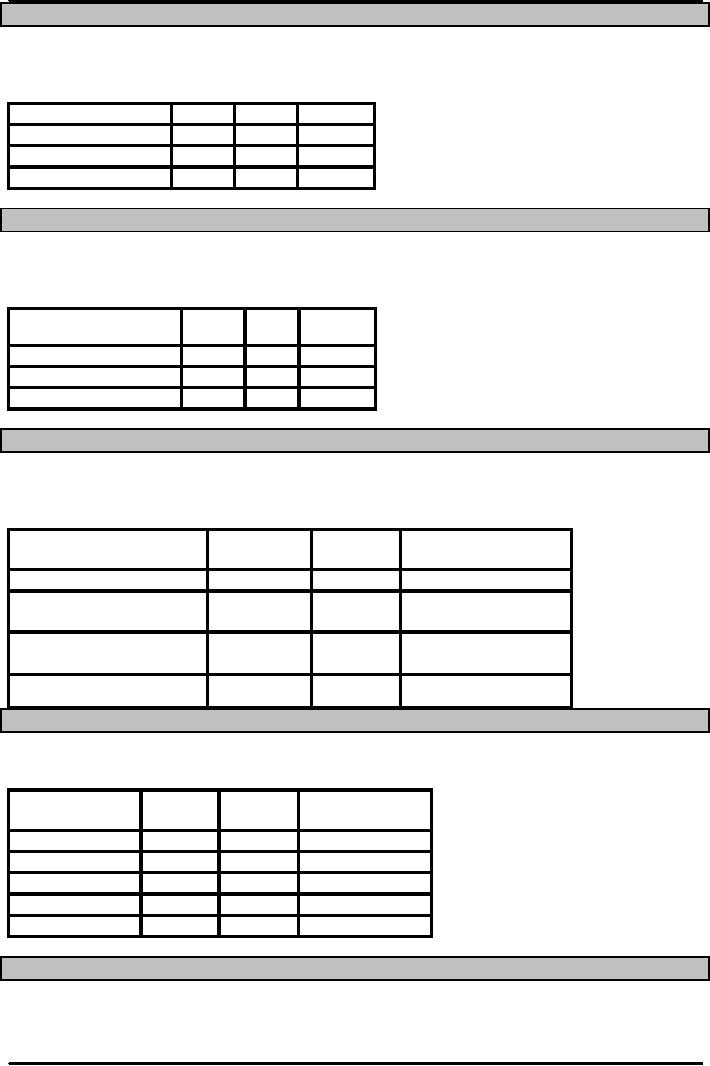 |

Production
and Operations Management
MGT613
VU
Lesson
05
Productivity
Productivity
is a measure of the effective use of
resources, usually expressed as the
ratio of output to
input
.Also called Efficiency at
times
�Productivity
ratios are used
for
Planning
workforce requirements
Scheduling
equipment
Financial
analysis
Productivity
Partial
measures is output/(single
input)
Multi-factor
measures is output/(multiple
inputs)
Total
measure is the output/(total
inputs)
Productivity
Growth = Current
Period Productivity Previous
Period Productivity
Previous
Period Productivity
Productivity
Growth = Unit less
Quantity
Partial
Output
Output
Output
Output
measures
Labor
Machine
Capital
Energy
Multifactor
Output
Output
measures
Labor
+ Machine
Labor
+ Capital + Energy
Total
=
Goods
or Services Produced
measure
All
inputs used to produce them
Units
of output per labor
hour
Labor
Productivity
Units
of output per shift
Value-added
per labor hour
Machine
Productivity Units of output
per machine hour
Units
of output per Rs.
input
Capital
Productivity
Dollar
value of output per Rs.
input
Units
of output per
kilowatt-hour
Energy
Productivity
Rupee
value of output per
kilowatt-hour
Example
What
is the multifactor productivity "MFP"? if
7500 Units Produced and Sold
for Rs.10/unit with
Cost
of labor of Rs.10,000, Cost of materials: Rs.5,000
and Cost of overhead:
Rs.20,000.
19

Production
and Operations Management
MGT613
VU
Output
MFP
=
Solution
Labor
+ Materials + Overhead
MFP
=
(7500
units)*(100)
10,000
+ 5,000 + 20,000
MFP
=
(750,000)
35,000
MFP
= 21.420
Factors
Affecting Productivity
Productivity
stands tall on four
important pillars of Capital,
Quality, Management and
Technology.
These
pillars are also responsible
for positively as well as
negatively affecting the Productivity
of
the
Organization.
1.
CAPITAL An existing machine or facility
if it is not functioning up to full
capacity or turning
out
products which are not
acceptable can lower
productivity. A new machine or repair
of
existing
machine would require capital
input.
2.
QUALITY Poor quality products would not
meet customer requirements and would
need
repairs
and reworks on the product to meet the
standards.
3.
MANAGEMENT With better scheduling,
planning, coordinating and controlling
activities of
management
the machine operations can be carried to
improve productivity.
4.
TECHNOLOGY Technological improvements
have increased productivity. A machine of
today
would
outperform machine of yesterday but may
not withstand machines of
tomorrow.
CAUTION:
Without careful planning
technology can reduce
productivity as it often leads
to
increased
costs, inflexibility or mismatched
operations. All leads to reduction in
value.
Other
Factors Affecting
Productivity
Standardization
We
live in a world where for the
sake of convenience, reliability and
safety,
majority
of the products and services have been
standardized. If for a moment any process
whether
it
relates to manufacturing or services is
made standard less, the
vital concept of
compatibility
would
be lost. Think for a moment if there is a
fire at a Montessori school or at a
crowded stadium,
if
there is no standardization of fire hose
attached to the fire truck and
fire hydrant present at
the
site,
no effort would succeed in
putting out the fire and
saving the lives of the
people.
Use
of Internet .Use of
Internet/Extranet especially for the
services side, even though there
are
knowledge
base applications available
for the manufacturing side as
well but primarily it has
the
been
the services side which has
been able to exploit the
resourcefulness of the Internet.
Computer
viruses. A
lot of time IT based
services industry have fallen a
prey to computer viruses
and
hackers.
Searching
for lost or misplaced
items.
This speaks low about the
coordinating activities and
can
lead
to loss in production time and
increase in idle time. Often
this also leads to increase
in
replacement
costs
Scrap
rates Any
aberration in the raw materials or
processed product can lead
to increase in scrap.
The
increase in scrap rate in fact
can decrease the utilization of
resources in general and
raw
material
New
workers Organizations
spend millions of Rupees
every year to train their
employees. A
trained
workforce is not only
reliable and dependable but also
ensures good
Host
of other Factors Affecting
Productivity:
Safety
Shortage
of IT Trained Workers
Layoffs
Labor
turnover
20

Production
and Operations Management
MGT613
VU
Design
of the workspace
Incentive
plans that reward
productivity
E.
Bottleneck Operation
Bottleneck
is one process in a chain of
processes, such that its
limited capacity ( increased
time
of
completion, or increased labour
requirement) reduces the capacity of the
whole chain
A
related concept is critical
path (see Project
Management) and the Theory of Constraints
(from
the
field of Industrial Engineering and
Operations management).
Theory
of constraints (TOC) is a body of
knowledge on the effective management of
(mainly
business)
organizations, as systems.
The
figure below clearly shows
that a machine requiring 12 hours to complete the
job is the real
bottleneck.
A manufacturing bottle neck like
this normally leads to
delayed completion and extended
time
for job. Similar bottlenecks
are observed in the Service side as
well.
10/hr
Machine
A
10/hr
Machine
B
Bottleneck
30/hr
Operation
Machine
C
10/hr
Machine
D
10/hr
Develop
productivity measures
Determine
and isolate critical (bottleneck)
operations
Develop
methods for productivity
improvements
Establish
reasonable goals
Get
management support
Measure
and publicize
improvements
Clearly
differentiate between productivity and
efficiency
Example
of Productivity Measurement
You
have just determined that
your 20 Operations ( Service) department employees
have used a total of
2200
hours of labor this week to
process 480 insurance forms.
Last week the same crew used
only 2000
hours
of labor to process 400
forms.
Which
productivity measure should be
used?
Answer:
Could be classified as a Total
Measure or Partial Measure and
Time/Labor productivity.
Is
productivity increasing or
decreasing?
Answer:
Last week's productivity =
400/2000 = 0.2, and this
week's productivity is = 480/2200 =
0.22.
So,
productivity is increasing
slightly.
21

Production
and Operations Management
MGT613
VU
Pakistani
Productivity Example 1
Calculate
the change in productivity of Pakistani
Textile Industry between the years
2003-04 and 2004-
05?
(Installed Capacity)
Parameter
2003/4
2004/5
Change
Number
of mills
399
426
6.77
Spindles
(000)
9286.8
9815.5
5.69
Rotors(000)
145.6
151.6
4.12
Pakistani
Productivity Example2
Calculate
the change in productivity of Pakistani
Textile Industry between the years
2003-04 and 2004-
05?
( Working Capacity)
Parameter
2003/4
2004/5 % Change
Number
of Looms(000)
4.3
4.9
13.95
Spindles
(000)
7710.0
8531.0
10.65
Rotors(000)
67.3
75.1
11.59
Textile
Productivity Example 3
Calculate
the Productivity of Pakistani Textile
Industry between the years 2003-04 and
2004-05?
(Weaving
Sector Capacity)
Parameter
Installed
Working
%
Effectiveness
I
W
W/I
Power
Loom Sector
225258
220447
Independent
Weaving Unit
26034
25500
Integrated
Textile Unit
10249
4947
Total
261541
220447
Pakistan
Automobile Industry
Calculate
the Productivity Change for
Pakistani Automobile Industry between the
years 2003-04 and
2004-05?
Type
2003-04
2004-05
%
change in
Productivity
Cars
79,655
100,213
Motorcycles
263,149
386,589
Trucks
1,669
1,999
Buses
1,151
1,503
Tractors
28,583
35,308
How
countries/nations can improve
productivity
As
students of Operations Management in Pakistan we
need to know and understand how the
concepts
of
productivity can help nation
improve its quality of life
and economy.
22

Production
and Operations Management
MGT613
VU
Increase
capital formation by saying no to
foreign goods. This would
increase savings and
decrease
consumption. Foreign goods
only make why to a market if
there is high consumption.
BE
PAKISTANI BUY PAKISTANI
Decrease
in administrative ( non productive)
regulations of the government. Self
explanatory.
Right
balance between Services and
Manufacturing activities. In the city of
Lahore, there is an
availability
of surplus services, which is often
less productive than
manufacturing operations
An
emphasis on both long term
and short term objective based
performance. (Closely monitor
and
audit the variances between planed and actual
results).
Exploit
the inherent resources of domestic market
.Let it be known to all that
the best
productive
market for Pakistani Producer is
Pakistani market.
SUMMARY
The
important concepts of Productivity,
Competitiveness and Strategy when considered in
cohesion
enhance
the overall performance of any service
based or manufacturing organization.
Organizations
formulate
operational and organizational strategies
to achieve competitive advantage over
its
competitors.
Different types of competencies allow
organizations to formulate time or
quality based
strategies
to achieve competitive
advantage
and increase their revenues.
The same concepts find
equal application for a
country to gain
competitive
advantage over other countries.
23
Table of Contents:
- INTRODUCTION TO PRODUCTION AND OPERATIONS MANAGEMENT
- INTRODUCTION TO PRODUCTION AND OPERATIONS MANAGEMENT:Decision Making
- INTRODUCTION TO PRODUCTION AND OPERATIONS MANAGEMENT:Strategy
- INTRODUCTION TO PRODUCTION AND OPERATIONS MANAGEMENT:Service Delivery System
- INTRODUCTION TO PRODUCTION AND OPERATIONS MANAGEMENT:Productivity
- INTRODUCTION TO PRODUCTION AND OPERATIONS MANAGEMENT:The Decision Process
- INTRODUCTION TO PRODUCTION AND OPERATIONS MANAGEMENT:Demand Management
- Roadmap to the Lecture:Fundamental Types of Forecasts, Finer Classification of Forecasts
- Time Series Forecasts:Techniques for Averaging, Simple Moving Average Solution
- The formula for the moving average is:Exponential Smoothing Model, Common Nonlinear Trends
- The formula for the moving average is:Major factors in design strategy
- The formula for the moving average is:Standardization, Mass Customization
- The formula for the moving average is:DESIGN STRATEGIES
- The formula for the moving average is:Measuring Reliability, AVAILABILITY
- The formula for the moving average is:Learning Objectives, Capacity Planning
- The formula for the moving average is:Efficiency and Utilization, Evaluating Alternatives
- The formula for the moving average is:Evaluating Alternatives, Financial Analysis
- PROCESS SELECTION:Types of Operation, Intermittent Processing
- PROCESS SELECTION:Basic Layout Types, Advantages of Product Layout
- PROCESS SELECTION:Cellular Layouts, Facilities Layouts, Importance of Layout Decisions
- DESIGN OF WORK SYSTEMS:Job Design, Specialization, Methods Analysis
- LOCATION PLANNING AND ANALYSIS:MANAGING GLOBAL OPERATIONS, Regional Factors
- MANAGEMENT OF QUALITY:Dimensions of Quality, Examples of Service Quality
- SERVICE QUALITY:Moments of Truth, Perceived Service Quality, Service Gap Analysis
- TOTAL QUALITY MANAGEMENT:Determinants of Quality, Responsibility for Quality
- TQM QUALITY:Six Sigma Team, PROCESS IMPROVEMENT
- QUALITY CONTROL & QUALITY ASSURANCE:INSPECTION, Control Chart
- ACCEPTANCE SAMPLING:CHOOSING A PLAN, CONSUMER’S AND PRODUCER’S RISK
- AGGREGATE PLANNING:Demand and Capacity Options
- AGGREGATE PLANNING:Aggregate Planning Relationships, Master Scheduling
- INVENTORY MANAGEMENT:Objective of Inventory Control, Inventory Counting Systems
- INVENTORY MANAGEMENT:ABC Classification System, Cycle Counting
- INVENTORY MANAGEMENT:Economic Production Quantity Assumptions
- INVENTORY MANAGEMENT:Independent and Dependent Demand
- INVENTORY MANAGEMENT:Capacity Planning, Manufacturing Resource Planning
- JUST IN TIME PRODUCTION SYSTEMS:Organizational and Operational Strategies
- JUST IN TIME PRODUCTION SYSTEMS:Operational Benefits, Kanban Formula
- JUST IN TIME PRODUCTION SYSTEMS:Secondary Goals, Tiered Supplier Network
- SUPPLY CHAIN MANAGEMENT:Logistics, Distribution Requirements Planning
- SUPPLY CHAIN MANAGEMENT:Supply Chain Benefits and Drawbacks
- SCHEDULING:High-Volume Systems, Load Chart, Hungarian Method
- SEQUENCING:Assumptions to Priority Rules, Scheduling Service Operations
- PROJECT MANAGEMENT:Project Life Cycle, Work Breakdown Structure
- PROJECT MANAGEMENT:Computing Algorithm, Project Crashing, Risk Management
- Waiting Lines:Queuing Analysis, System Characteristics, Priority Model